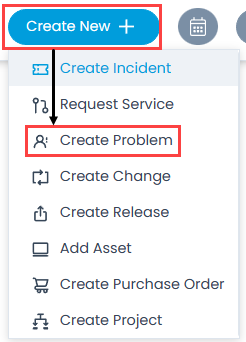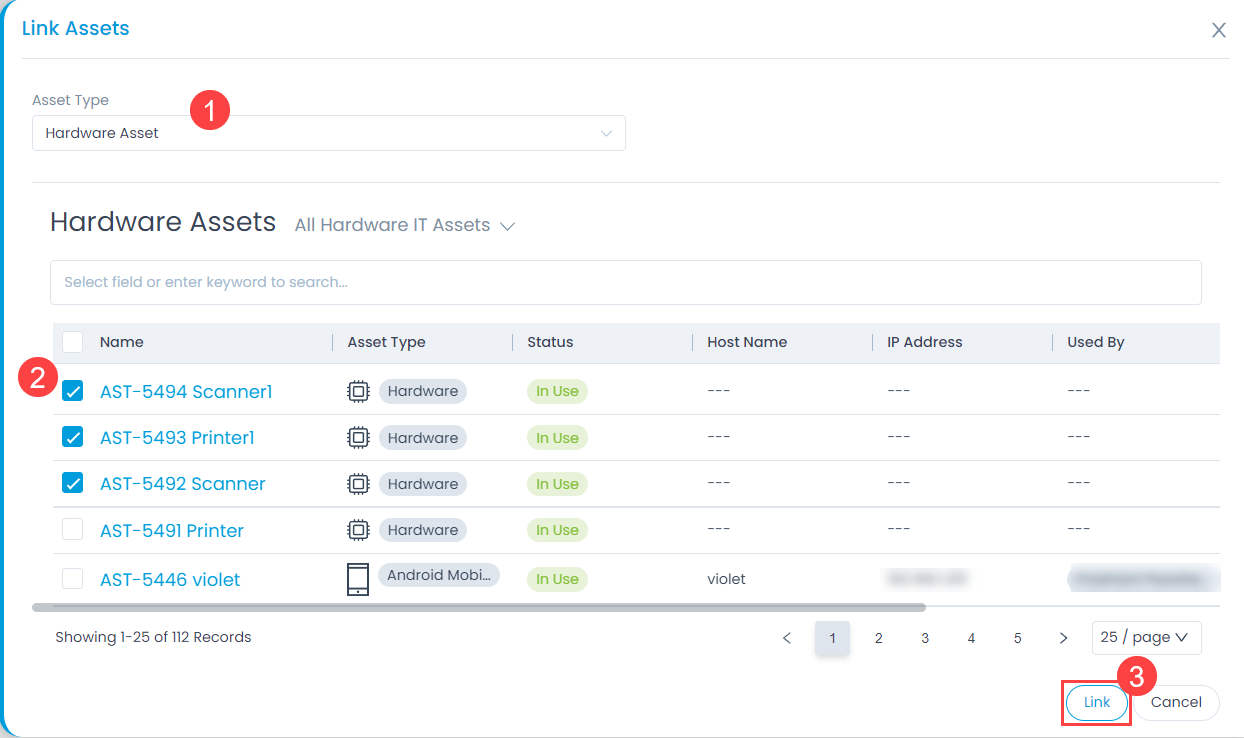Creating a Problem
To create a problem,
- Click the Create New + button and select the Create Problem option. The following page appears.


- Enter the following details:
| Parameter | Description |
|---|---|
| Fill From Template | Select a template for the problem. Once selected, it will automatically fill the entire form. You can check if the pre-filled details match your needs, else you can create the problem manually. Once selected, you can also reset it to default using the Reset to Default link. For more details on template creation, refer to the link Problem Templates. |
| Transition Model | Select the transition model based on which the status of the problem will change automatically when the set condition is met. For example, if a Problem model is set as From Status: Open, To Status: Pending, and Priority Condition as "Low". So when the Problem is set with Low Priority its status will automatically change to Pending. |
| Requester | Select the name of the person who is requesting to open the problem. By default, system takes your name as the requester. You can also create a problem on behalf of another requester. For example: If you are signed-in with name Jerry, you can create a problem from another name i.e. Mary. Once a problem is created, you can view its creator from the Audit Trail tab of the Problem Details page. |
| Subject | Type the subject of the problem. A subject should be short self-descriptive text to understand the problem. |
| Description | Type the detailed description about the problem. The description should contain sufficient details about the nature of the problem and what do you expect from a technician. |
| Status | Select the status of the problem. If it is a new problem, keep the status as Open. If the problem is a back-date entry, you can choose other values like In Progress, Pending, Resolved, and Closed. |
| Due By | Select the due date to resolve/close the problem. |
| Nature of Problem | Select the type of the problem as proactive or reactive. |
| Known Error | Select Yes if the problem is recursive or you already know what is the problem. |
| Priority | Select the priority of the problem. The default value is Low. The options are: Low, Medium, High, and Urgent. |
| Urgency | Select the urgency of the problem. The default value is Low. The options are: Low, Medium, High, and Urgent. |
| Impact | Select the impact of the problem. The default value is low. The options are: On Users, On Department, and On Business. |
| Category | Select the category of the problem. It is optional. |
| Technician Group | Select the technician group to whom the problem is to be assigned. |
| Assignee | Select the assignee to whom the problem should be assigned. It is optional. |
| Department | Select the department to whom the problem is to be assigned. |
| Company | Select the company to associate with the problem. This field is available only if the Managed Services Provider feature is enabled. |
| Vendor | Select the vendor from the dropdown list. |
| Location | Select the location. |
| Tags | Add the tags if required. These are useful in identifying the similar problems. It is optional. |
| Attachment | Attach the relevant files that will help the technician in resolving the ticket. |
| Link Assets | Click to link the associated assets if any with the newly created problem. If clicked, a popup appears displaying the list of assets. Select the asset type, the relevant required assets, and click the Link button as shown below. |

- Once done, click Create. The problem gets created and appears on the Problem list page. Also, an email is sent to you acknowledging the problem. A problem starts with a prefix PBM. For example: PBM-1.